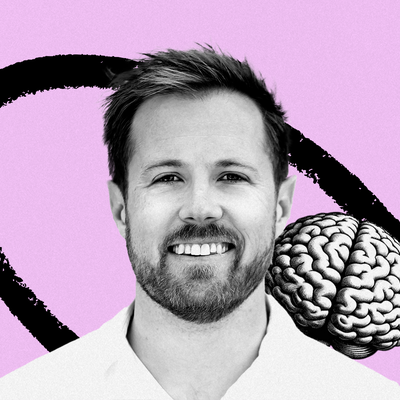
This essay is brought to you by Burb
Do you run a membership community or course on Circle, Slack, or Discord?
Burb can help you streamline and automate your member journey so that you can focus on what’s most important: making your offering great.
The first big idea in Standing at the Edge by Zen priest Joan Halifax is this:
Traits, behaviors, and emotions that we usually consider healthy—like altruism, empathy, engagement, respect, and integrity—can, when pursued to their extreme, tip our psychology over the edge from health into sickness.
The second big idea is this:
That we grow from falling over the edge. If we carefully observe and explore what Halifax terms the “edge states” of our psychology, we can turn what we learn into our greatest possible moments for growth and wisdom. And…just maybe…we can learn to pull ourselves back from the edge more often.
In summary: the good pursued to its limit becomes the bad, and exploring the dark places we visit in our pursuit of the good can create the conditions for growth, change, and wisdom.
In some sense, this is a tale as old as time. Take, for example, Batman:
Batman is a young man with altruism, empathy, engagement, respect, and integrity for days! He’s so empathetic that when he loses his parents he commits himself to making sure what happened to him never happens to anyone else. He’s so engaged, he’s out every night doing it. And he’s got integrity to boot…he never kills any of the baddies even when he could (and maybe should.) He always leaves them alive enough to get arrested by Gordon.
Somehow, when Batman pursues these “good” things it always leaves him in anguish. He sacrifices everything important to him—his identity, his relationships, his humanity—in order to fulfill his mission.
And yet, all of these experiences become fodder for Bruce Wayne—the man’s—personal growth. In Batman Begins Bruce Wayne’s father asks him, “Why do we fall, Bruce?” And Bruce replies: “So we can learn to pick ourselves up again.”
I got chills in the theater when I heard that—in the same way I get chills reading Standing at the Edge.
It's a book born from Halifax’s experience as a priest, an activist, and hospice caregiver and it’s aimed at explaining the psychological states faced by those who pursue lives of service. So it might feel irrelevant if you mostly spend your time building a startup or PMing a product. But I think it is deeply connected to things we face every day in tech.
If you’re trying to put a dent in the universe you’re probably, at least partially, doing it because you want to improve a corner of the world. As such, you’ll encounter all of the psychological territories explored in this book like altruism, empathy, integrity, respect, and engagement—and you’ll face their upsides and downsides. Let's talk about the downsides.
The Bad Side of the Good
Here’s what Halifax says about the negative sides of the Edge States. (I’ve changed the examples to be more in line with what you might expect in tech.)
Altruism can turn into pathological altruism. Outwardly altruistic acts when pursued out of fear, or need for social approval, or the compulsion to fix people can end up harming us or others. Think of burning the midnight oil to “help your team out” when you’re actually driven by a need for social recognition.
Empathy can slide into empathic distress. Empathy’s gift is that it can let you feel the suffering of others—but if you do that all day you may end up damaging yourself. Think of the manager who’s constantly taking on the burdens of the people on her team as her own.
Integrity can lead to outrage, anger, disgust, or apathy. If you’re acting with integrity in an environment that is constantly violating your sensibilities you’ll end up living in negative emotional states. Think about being the only one on a team who cares about small details and quality work product and feeling constantly let down by other people’s output.
Respect can turn into bullying. If you feel you give respect but don’t get it back your respect may turn into disrespect and get displaced onto the people you are close to. Think of an important project getting canceled because of inter-departmental politics and then taking your frustration out on a colleague without thinking.
Engagement can lead to burnout. Throwing yourself a hundred percent into what you do is a great way to fill your life with meaning—but if you don’t build in breaks to rest and recharge you can end up hurting yourself and not being able to work.
I think there’s a lot of value in examining how psychological terrain that we think of as positive can turn unhealthy. The question is…what happens when you notice yourself tipping over into the negative aspects of an Edge State? That’s where the most valuable part of Standing at the Edge is: the idea that we grow from our edges.
Learning from Edge States
When I’m having a hard time I often go for a walk and listen to the second chapter of Standing at the Edge on audiobook. It’s read by Halifax herself, and it’s in this chapter that she speaks in the calm, slow, eloquent tones of a Zen priest about the idea that if we learn to walk the more inhospitable terrains of our psyche it will have a direct impact on our ability to be of service in the world:
“When we do fall into the less habitable regions of our minds, we can learn from these dangerous territories. Edges are places where opposites meet. Where fear meets courage and suffering meets freedom. Where solid ground ends in a cliff face. Where we can gain a view that takes in so much more of our world. And where we need to maintain great awareness, lest we trip and fall.”
She talks about the idea of positive disintegration: a concept from Polish psychiatrist Kazimierz Dąbrowski that says that personal crises create the conditions for growth. And she connects that back to saying from Thich Nat Hanh: no mud, no lotus. In other words, you don’t get the joy and beauty of the lotus without some mud.
It might be easy to dismiss this kind of talk as another version of the aphoristic cliche, “It’s good to get curious about your emotions!”
But in my experience getting curious about your emotions is a little like sex in high school. Everyone knows they want to be doing it, but very few people actually are. That’s because getting curious requires inspiration and it requires courage. And Standing at the Edge provides both of those things for me. It’s a reminder that by turning toward the psychological terrain that’s most difficult we learn the most valuable lessons, find the most growth, and experience the most richness life can offer:
“I have come to see the profound value of taking in the whole landscape of life and not rejecting or denying what we are given. I have also learned that our waywardness, difficulties, and 'crises' might not be terminal obstacles. They can actually be gateways to wider, richer internal and external landscapes. If we willingly investigate our difficulties, we can fold them into a view of reality that is more courageous, inclusive, emergent, and wise—as have many others who have fallen over the edge.”
How to Actually Do This
Each chapter explores each Edge State, and Halifax always offers practical advice about how to work through things when you meet the dark side of your psychology.
A lot of it is classic Zen wisdom mixed with modern psychology, and will be familiar to you if you’ve read other meditation-informed books on working with suffering. There is a lot in there that’s inspiring, or a new twist on a practice that might be especially useful for you if you’re serving out in the world (instead of meditating in a monastery.)
The biggest thing that unites each practice, though, is the idea that compassion is at the root of finding our way out of things.
She defines compassion as feeling genuine concern about the suffering of others and a desire to improve their welfare. She believes that compassion, “calls forth our best human capacities—attentional balance and caring, unselfish intention and insight, and ethical action—in a way that no other response does.”
She thinks of it like a sort of renewable resource for service to ourselves and others, one that doesn't have the kinds of negative aspects that other Edge States do. The basic insight is that compassion—which combines an awareness of suffering with a desire to alleviate it—can be applied to ourselves, just as it can be applied to people in the outside world. And compassion can be learned. We have brain circuits that are designed to allow us to care for the suffering of others. If we learn to wield them in service of ourselves, we’ll be much better equipped to walk the Edge States—and unlock the growth that is contained within them.
I haven’t written about compassion much yet, but it’s been a particularly important part of my own journey over the last year or two. Until my late twenties it seemed like a squishy kind of emotional state. But over the last year or so it's been a key force for me generate enough motivation, and inspiration to actually walk my own Edge States.
The Last Word
In summary, this is a worthy book if you want to learn how to walk the difficult terrain of your own mind.
It's not without flaws. Conceptually, the idea of Edge States is incredibly appealing and I think it works extremely well for some kinds of psychological states. For example, it's easy to see how empathy can lead to empathic distress: the process of engaging in feeling someone else's emotions can, by the nature of those emotions, be hurtful or damaging.
But it doesn't work as well for some of the other examples in the book. For example, altruism leading to "pathological altruism" is a little bit shakier epistemically. Once you're being pathologically altruistic you're not being altruistic anymore—so it's not in fact a negative aspect of a single psychological terrain. Once you're being pathologically altruistic you're in entirely different terrain than you were before.
A more complete account of Edge States would include the idea that a journey into one psychological territory can lead you somewhere dangerous and new that you didn't expect once you leave the original place behind. It's like floating down a river and accidentally dropping off of a waterfall.
If you can put these kinds of quibbles aside, this book is ultimately very wise and practical. I predict you'll feel like a better and more effective person for having read it.
The Only Subscription
You Need to
Stay at the
Edge of AI
The essential toolkit for those shaping the future
"This might be the best value you
can get from an AI subscription."
- Jay S.
Join 100,000+ leaders, builders, and innovators

Email address
Already have an account? Sign in
What is included in a subscription?
Daily insights from AI pioneers + early access to powerful AI tools











Comments
Don't have an account? Sign up!